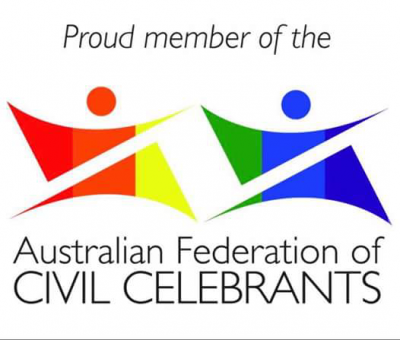The word ‘Monitum’ means caution or forewarning.
From 9th December 2017, the monitum the new/current Monitum, or warning about the importance of what is about to occur, by way of the definition of marriage, is to be said by the Celebrant:
I am duly authorised by law to solemnise marriages according to law.
Before you are joined in marriage in my presence and in the presence of these witnesses, I am to remind you of the solemn and binding nature of the relationship into which you are now about to enter.
Marriage, according to law in Australia, is the union of two people to the exclusion of all others, voluntarily entered into for life.
The history is that in Australia, before 2004, the Marriage Act 1961, required celebrants explain the legal nature of marriage to a couple as “the union of a man and a woman to the exclusion of all others, voluntarily entered into for life”,
On 27 May 2004 the then federal attorney-general Philip Ruddock introduced the Marriage Amendment Bill 2004 to incorporate a definition of marriage into the Marriage Act 1961, being:
“marriage means the union of a man and a woman to the exclusion of all others, voluntarily entered into for life”
This definition is known as the Monitum.
That definition however changed with the Marriage Amendment (Definition and Religious Freedoms) Act 2017, which amended the Marriage Act 1961 to provide for marriage equality.
The right to marry in Australia is now not determined by sex or gender.
The vows and monitum changed to reflect the new definition of marriage as:
‘the union of 2 people to the exclusion of all others, voluntarily entered into for life’.
Under current law, all authorised celebrants (other than ministers of religion belonging to a recognised denomination) are required to include a statement (the ‘monitum’) explaining the nature of the marriage relationship in all marriage ceremonies they perform (section 46 of the Marriage Act).
There is of course quite a difference between a minister of religion who is part of a religious institution and a religious marriage celebrant who is an authorised celebrant but who has elected, on religious grounds, to be registered as such.
Under section 47A of the Marriage Act, a religious marriage celebrant may refuse to solemnise a marriage if the celebrant’s religious beliefs do not allow the celebrant to solemnise the marriage but if a ceremony takes place, from 9 December 2017, all authorised marriage celebrants, including religious marriage celebrants, are nonetheless required to state the new legal definition of marriage as part of a marriage ceremony.
From 9 December 2017, the monitum changed to reflect the new/current definition of marriage:
I am duly authorised by law to solemnise marriages according to law.
Before you are joined in marriage in my presence and in the presence of these witnesses, I am to remind you of the solemn and binding nature of the relationship into which you are now about to enter.
Marriage, according to law in Australia, is the union of two people to the exclusion of all others, voluntarily entered into for life.
If an authorised Celebrant fails to solemnise a marriage in compliance with section 44, 45, 46 and 48 of the Marriage Act it may result in a void marriage (45 being the vows).
It is an offence under section 100 of the Marriage Act for a person to solemnise a marriage if they have reason to believe the marriage would be void.
So, put simply, if the current Monitum is not stated, the marriage may be void and the Celebrant open to prosecution.



